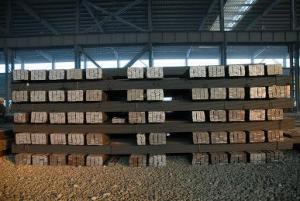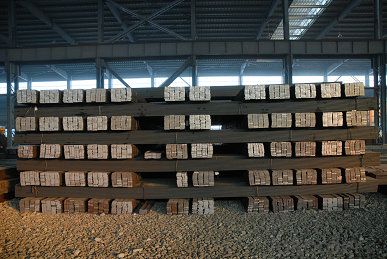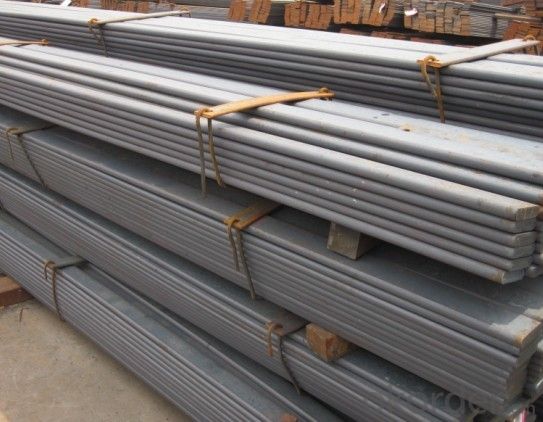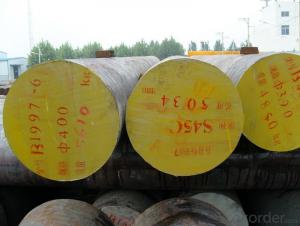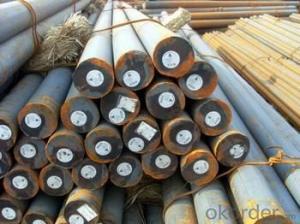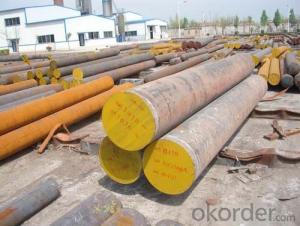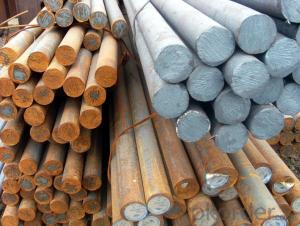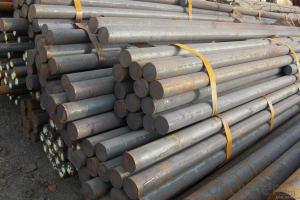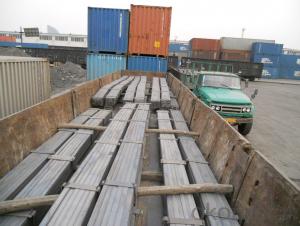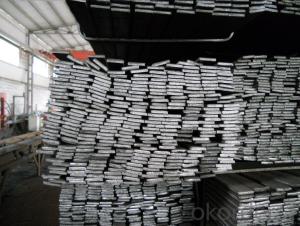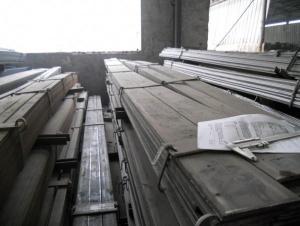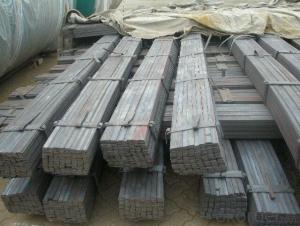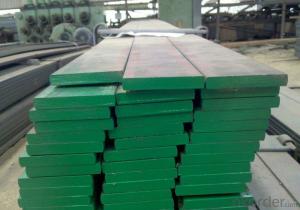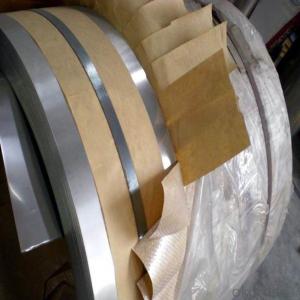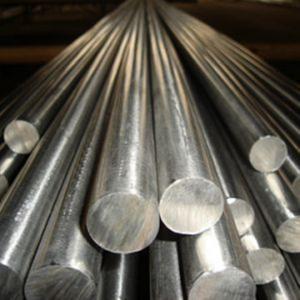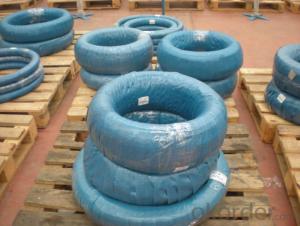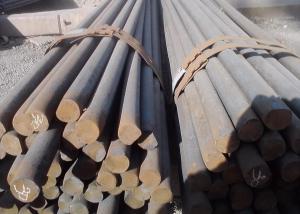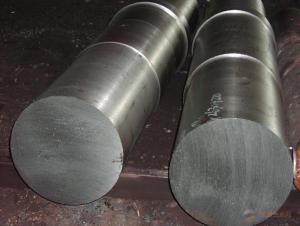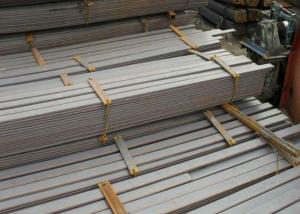Hot Rolled Spring Steel Flat Bar
- Loading Port:
- China Main Port
- Payment Terms:
- TT or LC
- Min Order Qty:
- -
- Supply Capability:
- -
OKorder Service Pledge
OKorder Financial Service
You Might Also Like
Product Description:
OKorder is offering high quality Steel Flat Bar at great prices with worldwide shipping. Our supplier is a world-class manufacturer of steel, with our products utilized the world over. OKorder annually supplies products to European, North American and Asian markets. We provide quotations within 24 hours of receiving an inquiry and guarantee competitive prices.
Product Applications:
Steel Flat Bar are ideal for structural applications and are widely used in the construction of buildings and bridges, and the manufacturing, petrochemical, and transportation industries.
Product Advantages:
OKorder's Steel Flat Bar are durable, strong, and resist corrosion.
Main Product Features:
· Premium quality
· Prompt delivery & seaworthy packing (30 days after receiving deposit)
· Corrosion resistance
· Can be recycled and reused
· Mill test certification
· Professional Service
· Competitive pricing
Product Specifications:
Commodity: Mild Steel Flat Bar
Standard: GB;JIS
Material: Q195-235;SS400
Origin place: China
Thickness: 3mm-30mm
Width:20mm-200mm
Length: Max 12m
Certification: SGS/BV
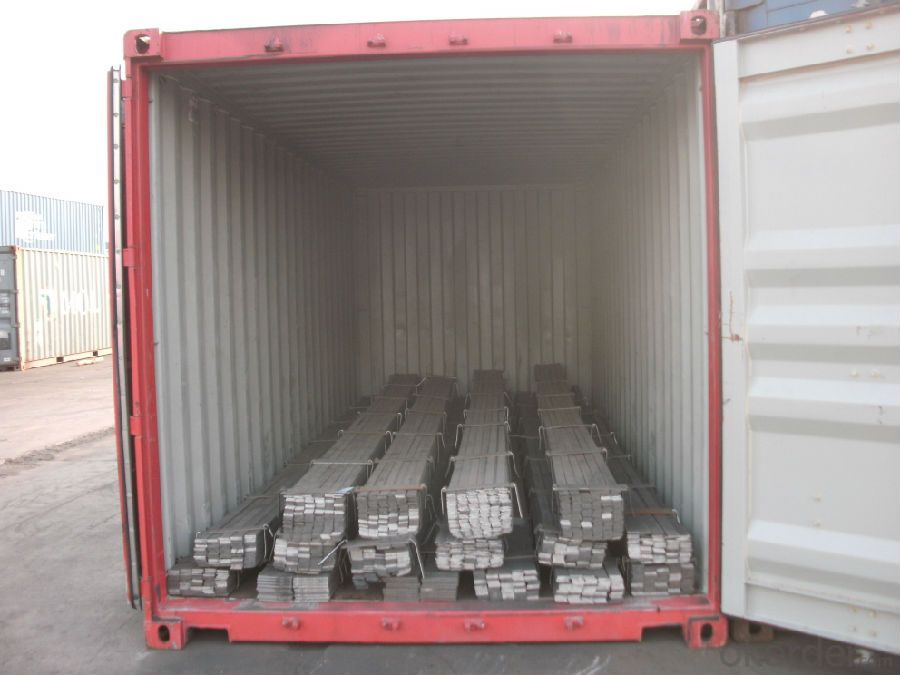
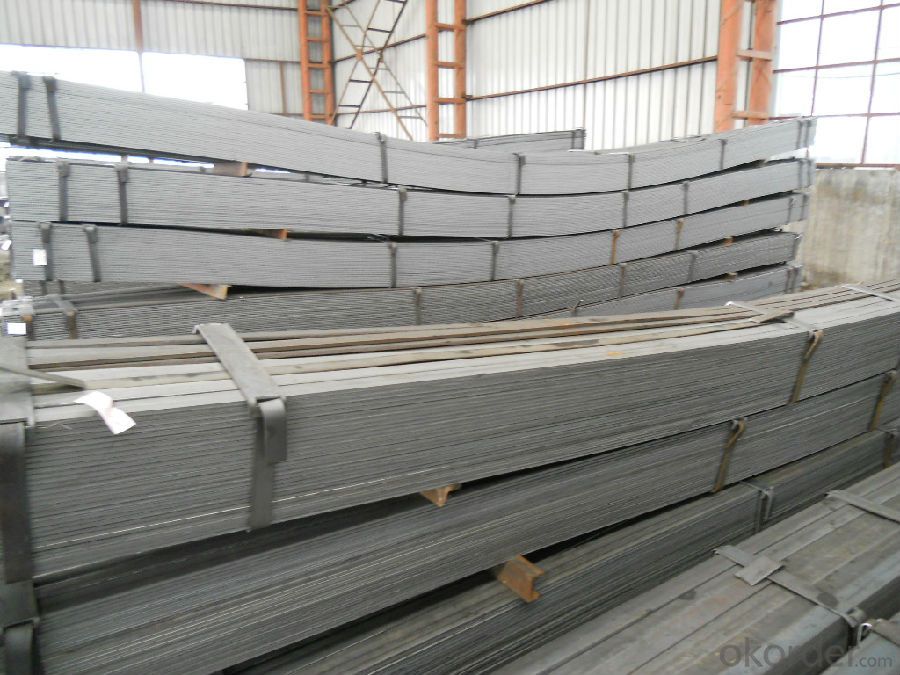
Usage/Applications of Steel Flat Bar
Widely used for construction, Machinery manufacturing, Iron tower steel structure, Shipbuilding; Steel grating, Staircase, Bridge, Viaduct, Railway spare parts, Boilers making etc.
Packaging & Delivery of Mild Steel Flat Bar
Packaging Details: The Mild Steel Flat Bars are packed in bundles and loaded in 20 feet/40 feet container, or shipped by bulk cargo ,also we can do as customer's requirements.
Delivery Details:30~45 days upon the receipt of buyer payment by T.T. or L/C.
Production Flow of Steel Flat Bar
The Mild steel flat bar is made through three processes:
1.Feeding the material: Feeding the row material (the steel plate) to Slitting Line.
2.Slitting:The steel plate would be slitted into expected width by lengthways cutter.
3. Leveled and cutting: The plat bar would be ground into level by the grinder and then cut into required length
Payment:
-Invoicing on theoretical weight or actual weight as customer’s request.
-Regular terms of payment:
1, 30% payment in advance, the remaining balance (70% payment) against the copy of B/L.
2, 30% payment in advance, the remaining balance (70% L/C) against the copy of B/L.
3, Negotiable.
FAQ:
Q1: Why buy Materials & Equipment from OKorder.com?
A1: All products offered byOKorder.com are carefully selected from China's most reliable manufacturing enterprises. Through its ISO certifications, OKorder.com adheres to the highest standards and a commitment to supply chain safety and customer satisfaction.
Q2: How do we guarantee the quality of our products?
A2: We have established an advanced quality management system which conducts strict quality tests at every step, from raw materials to the final product. At the same time, we provide extensive follow-up service assurances as required.
Q3: How soon can we receive the product after purchase?
A3: Within three days of placing an order, we will begin production. The specific shipping date is dependent upon international and government factors, but is typically 7 to 10 workdays.
- Q: What are the different coating techniques for special steel parts?
- There are several different coating techniques that can be used for special steel parts. Some common ones include electroplating, powder coating, thermal spraying, and chemical vapor deposition. Each technique offers unique advantages and is chosen based on factors such as the desired coating properties, cost, and application requirements.
- Q: What are the environmental impacts of producing special steel?
- The production of special steel has several environmental impacts. Firstly, the extraction of raw materials such as iron ore and coal leads to habitat destruction and loss of biodiversity. Secondly, the manufacturing process involves high energy consumption, contributing to greenhouse gas emissions and climate change. Additionally, the use of various chemicals and additives in steel production can result in water and soil pollution. Lastly, the disposal of waste materials, including slag and dust, can have detrimental effects on local ecosystems if not properly managed.
- Q: What are the main characteristics of spring steel?
- Spring steel is a type of high-carbon steel that is specifically designed to possess excellent elasticity and resilience. It is primarily known for its ability to return to its original shape after being bent or deformed, making it ideal for applications where repeated and controlled deflection is required. The main characteristics of spring steel include: 1. High Yield Strength: Spring steel is characterized by its high yield strength, which refers to the amount of stress it can withstand before permanent deformation occurs. This allows it to bear heavy loads and resist bending or breaking under pressure. 2. Excellent Elasticity: One of the most significant characteristics of spring steel is its exceptional elasticity. It can be flexed, twisted, or stretched without permanently deforming, and once the force is released, it returns to its original shape. This property is crucial for applications requiring constant and repetitive motion. 3. Superior Fatigue Resistance: Spring steel is exceptionally resistant to fatigue, meaning it can endure millions of cycles of stress without failing. This characteristic is crucial for products subjected to continuous and repetitive loads, such as springs in automotive suspensions or industrial machinery. 4. Good Hardness and Wear Resistance: Spring steel is typically hardened to enhance its wear resistance. This allows it to withstand abrasion and deformation under harsh conditions, making it suitable for applications that involve friction or impact, such as cutting tools or automotive components. 5. Excellent Formability: Spring steel can be easily formed into various shapes and sizes, making it highly versatile for different applications. It can be cold-drawn, rolled, or heat-treated to achieve specific mechanical properties, allowing manufacturers to customize its characteristics based on their specific requirements. Overall, the main characteristics of spring steel are its high yield strength, excellent elasticity, superior fatigue resistance, good hardness and wear resistance, and exceptional formability. These qualities make it a vital material in a wide range of industries, including automotive, aerospace, construction, and manufacturing.
- Q: What are the main characteristics of alloy steel forgings?
- The main characteristics of alloy steel forgings include enhanced strength, durability, and resistance to wear and corrosion. They also offer excellent heat resistance and can withstand high temperatures. Additionally, alloy steel forgings possess good machinability and can be easily shaped and formed into various complex designs.
- Q: Can special steel be used in the manufacturing of firearms?
- Yes, special steel can be used in the manufacturing of firearms. Special steel, such as stainless steel or alloy steel, offers enhanced strength, durability, and resistance to corrosion, making it well-suited for firearm construction.
- Q: What are the different cryogenic grades of special steel?
- Specifically designed for use in extremely low temperature environments, there are several cryogenic grades of special steel available. These grades have been developed to retain their mechanical properties and prevent brittleness at cryogenic temperatures, making them ideal for applications such as LNG storage tanks, aerospace equipment, and low-temperature chemical processes. Among the commonly used cryogenic grades is the 300 series stainless steel, particularly types 304 and 316. These stainless steels contain nickel, which enhances their cryogenic toughness and ability to withstand thermal stress. Consequently, they are frequently employed in the construction of cryogenic storage vessels and piping systems. Another popular cryogenic grade is the 9% nickel steel, which is alloyed with approximately 9% nickel. This alloy provides excellent low-temperature toughness and ductility. As a result, it is often chosen for constructing LNG storage tanks, capable of withstanding the extremely cold temperatures required for the storage and transportation of liquefied natural gas. In addition, there are special low-temperature carbon steels, such as ASTM A350 LF2 and ASTM A333 Grade 6, which are engineered to maintain their toughness and impact resistance at cryogenic temperatures. These steels find extensive use in low-temperature applications, including cryogenic piping systems and equipment for the oil and gas industry. In conclusion, the various cryogenic grades of special steel encompass stainless steels (such as the 300 series stainless steel), 9% nickel steel, and low-temperature carbon steels (like ASTM A350 LF2 and ASTM A333 Grade 6). Each grade has been specifically designed to endure the challenges presented by extremely low temperatures while retaining their mechanical properties and resistance to brittleness.
- Q: What are the different casting techniques used for special steel?
- Some of the different casting techniques used for special steel include investment casting, sand casting, continuous casting, and centrifugal casting. Each technique has its own advantages and is chosen based on factors such as the complexity of the steel part, the desired quality, and cost considerations.
- Q: What are the different corrosion testing methods used for special steel?
- To assess and evaluate the resistance of special steel against corrosion, various testing methods are utilized. These include: 1. Salt Spray Testing: This method involves subjecting the special steel to a controlled mist of saltwater. The steel specimen is placed in a chamber where it is exposed to the mist for a specific duration. The resulting corrosion is visually evaluated and compared to established criteria. 2. Electrochemical Testing: To study the corrosion behavior of special steel, electrochemical techniques like potentiodynamic polarization and electrochemical impedance spectroscopy (EIS) are commonly employed. These methods measure the steel's current and potential responses in different corrosive solutions, providing information on corrosion rate and other electrochemical parameters. 3. Immersion Testing: In this method, the special steel is immersed in a specific corrosive solution for a predetermined period. The solution can be acidic, alkaline, or even simulated seawater, depending on the intended application. The corrosion-induced weight loss or surface damage is then measured and compared to assess the steel's corrosion resistance. 4. Crevice Corrosion Testing: This technique focuses on evaluating the susceptibility of special steel to crevice corrosion, which occurs in confined spaces or gaps. By creating a crevice between the steel specimen and another material and introducing a corrosive solution, the severity of crevice corrosion can be assessed. This can be done by measuring the depth of attack or using electrochemical methods. 5. Intergranular Corrosion Testing: Special steel is sometimes prone to intergranular corrosion, which occurs along the grain boundaries. Tests like the Strauss test or the Huey test are conducted to determine the steel's susceptibility to this form of corrosion. These tests involve immersing the steel in a corrosive solution at elevated temperatures and assessing the extent of intergranular attack. 6. Accelerated Testing: Accelerated corrosion testing methods aim to simulate the long-term effects of corrosion within a shorter time frame. Techniques like cyclic corrosion testing, which involve alternating exposure to different corrosive environments, can provide valuable insights into the steel's performance under realistic conditions in a shorter period. It should be noted that the selection of the corrosion testing method depends on the specific requirements, intended application, and environmental factors to which the special steel will be exposed.
- Q: What are the requirements for special steel used in industrial equipment manufacturing?
- Special steel used in industrial equipment manufacturing typically has certain requirements to ensure its suitability for use in demanding applications. Some of the key requirements for special steel in this context include: 1. High strength: Industrial equipment often operates under heavy loads, so special steel must have excellent strength properties to withstand these forces. It should have a high yield strength, tensile strength, and hardness to prevent deformation or failure. 2. Corrosion resistance: Many industrial environments are prone to corrosion due to exposure to chemicals, moisture, or extreme temperature variations. Special steel used in such applications should have good corrosion resistance to prevent degradation and ensure long-term performance. 3. Wear resistance: Industrial equipment often experiences significant wear due to friction, abrasion, or impact. Therefore, special steel should have high wear resistance to maintain its integrity and prevent premature failure. 4. Toughness and impact resistance: Equipment used in industrial settings may face sudden shocks, impacts, or vibrations. Special steel should possess good toughness and impact resistance to absorb energy and resist fracture or cracking. 5. Heat resistance: In certain industrial processes, equipment may be exposed to high temperatures or rapid temperature changes. Special steel should have good heat resistance, with the ability to retain its strength, hardness, and other mechanical properties even at elevated temperatures. 6. Machinability: Special steel used in industrial equipment manufacturing should have good machinability to facilitate the fabrication process. It should allow for easy cutting, drilling, welding, and other machining operations without excessive tool wear or damage to the material. 7. Dimensional stability: Equipment components need to maintain their shape and dimensions under different operating conditions. Special steel should exhibit dimensional stability to prevent warping, distortion, or dimensional changes that could affect the performance or assembly of the equipment. Meeting these requirements ensures that special steel used in industrial equipment manufacturing can withstand the harsh conditions, provide reliable performance, and have a long service life, ultimately contributing to the overall efficiency and productivity of industrial processes.
- Q: Is special steel recyclable?
- Yes, special steel is recyclable.
Send your message to us
Hot Rolled Spring Steel Flat Bar
- Loading Port:
- China Main Port
- Payment Terms:
- TT or LC
- Min Order Qty:
- -
- Supply Capability:
- -
OKorder Service Pledge
OKorder Financial Service
Similar products
Hot products
Hot Searches
Related keywords
